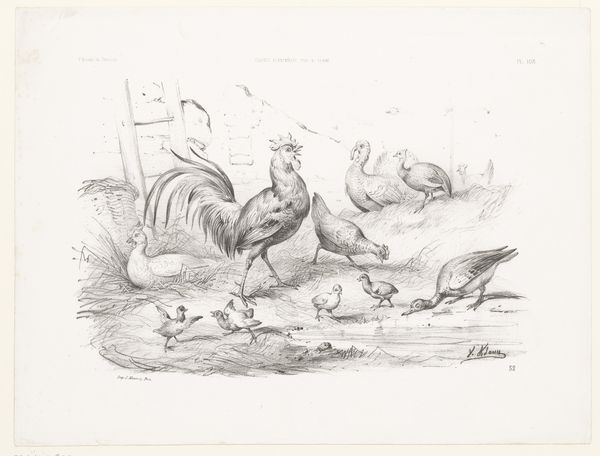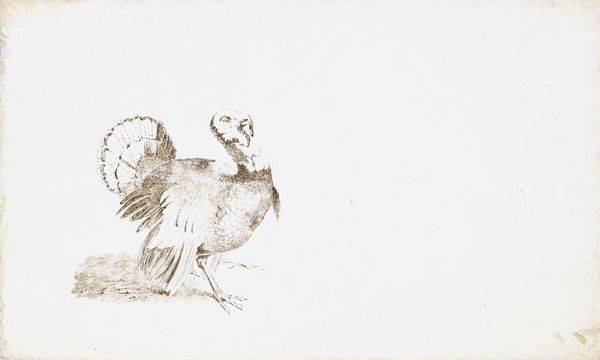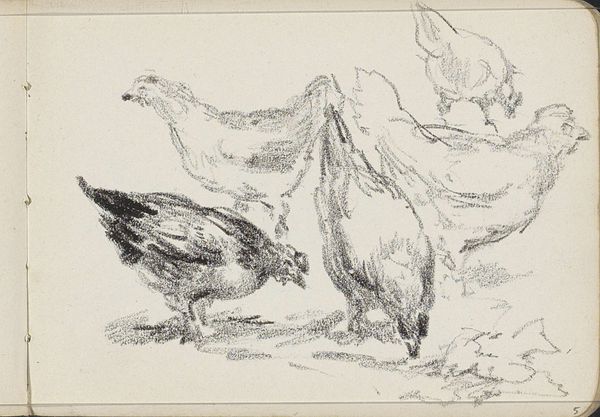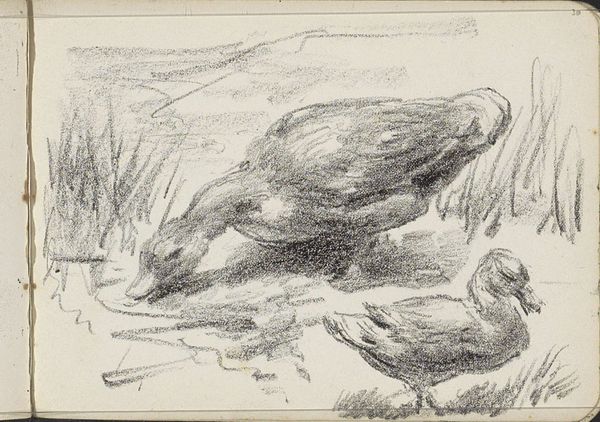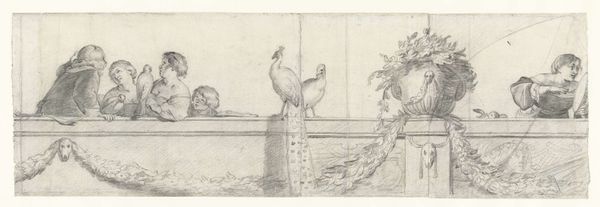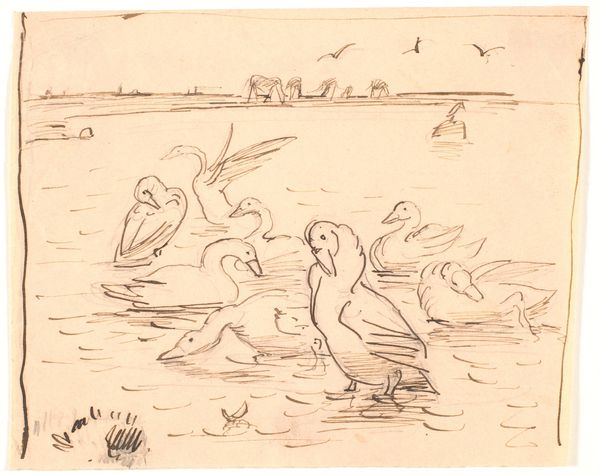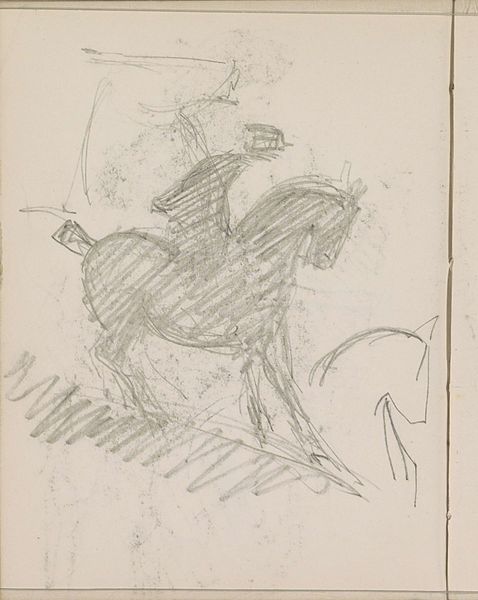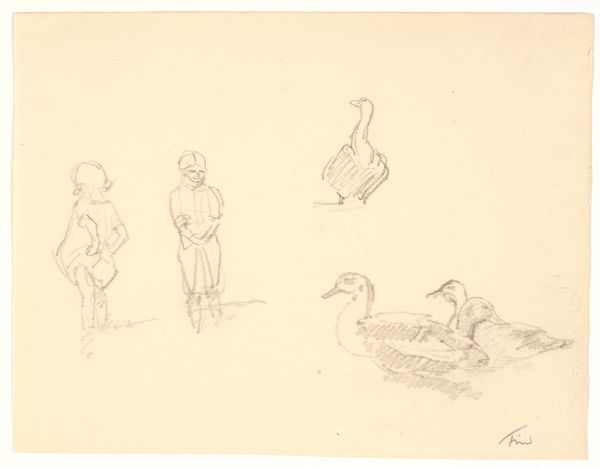
drawing, pencil
#
landscape illustration sketch
#
drawing
#
comic strip sketch
#
pen illustration
#
pen sketch
#
landscape
#
personal sketchbook
#
ink drawing experimentation
#
pen-ink sketch
#
pencil
#
sketchbook drawing
#
genre-painting
#
storyboard and sketchbook work
#
sketchbook art
#
realism
Dimensions: 88 mm (height) x 102 mm (width) (bladmaal)
Curator: Let's turn our attention to "En høne med kyllinger," or "A Hen with Chickens," created in 1872 by Niels Skovgaard, currently held here at the SMK. Editor: What strikes me immediately is the starkness of the scene, almost minimalist in its execution. Just a hen, her chicks, a bucket, rendered with what appears to be a graphite pencil on paper. There's a sense of humble labor here. Curator: Indeed. It's vital to understand Skovgaard within the context of 19th-century Danish nationalism and his role in defining a distinctly Danish aesthetic. Skovgaard's choice to depict such a common farmyard scene, elevates the everyday experiences of the common person and the rural life central to notions of national identity. How might you view this labor within the tradition of the representation of gendered labor roles in the late 19th century? Editor: Precisely. I see this image also pointing to agricultural production; the materiality is vital. This isn't a grand mythological subject. Instead, it shows domesticity. That bucket, seemingly made of wooden staves – crafted by human hands. Even the grain the hen seeks represents an agricultural labor. What kind of pencils did he have at his disposal? How was the paper made? Where would the average person buy such paper in 1872? All these facets shape the drawing. Curator: Good points, how the image presents traditional gender roles can hardly be overstated in light of ongoing discussions about class. Skovgaard does portray an uncomplicated picture of labor, with that he creates and perhaps reinforced this idea of what a women’s labor is within the Danish agricultural landscape. He is showing labor from afar, romanticized and unengaged with. He leaves out the real challenges women like that in the picture probably encountered daily. Editor: Well said! It really makes you wonder what the means of depicting such “rural labor” does when the image does not depict all forms of the material reality and consumption of a family or a person on the land, for example? What parts are omitted, what remains, and how does it affect the way a 21st-century person like myself, views the drawing? Curator: In closing, I think considering both the symbolic weight of the domestic sphere, as well as the socio-political context in which Skovgaard was producing this type of sketches, is a very helpful start when one thinks of this seemingly mundane artwork. Editor: I agree. Appreciating both the conceptual elements alongside the image’s material construction certainly invites reflection about Danish society both past and present.
Comments
No comments
Be the first to comment and join the conversation on the ultimate creative platform.

